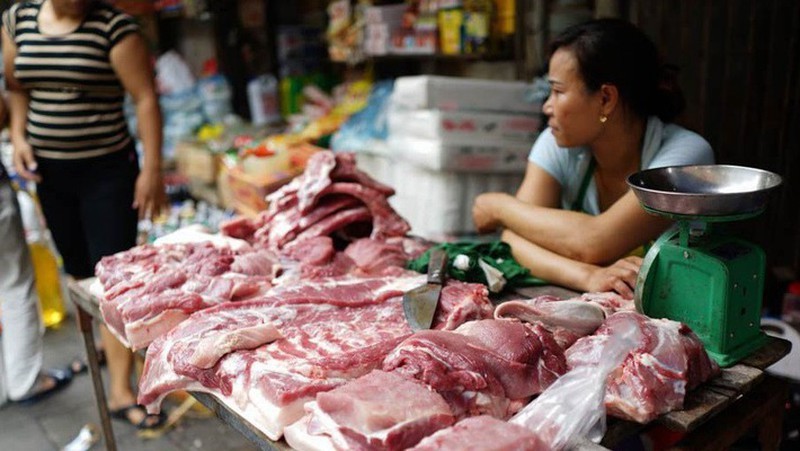A trip to the local market can often reveal an interesting sight: piles of pork cuts covered with a cloth. This practice might puzzle some shoppers, but the vendors have their reasons. Read on to uncover the mysteries behind this common practice.
Unveiling the Reasons for the Cloth Cover on Meat Displays
Reason 1: Absorbing Excess Blood
The pork sold in local markets is typically freshly sourced from slaughterhouses. Consequently, residual blood often seeps out onto the meat’s surface. Left unattended, this blood can cause the meat to appear less appealing, even unappetizing. Vendors, therefore, use cloths to absorb this excess blood, enhancing the meat’s visual appeal with a quick and simple solution.
Reason 2: Soaking Up Injected Water

Using a cloth to soak up water released from the meat
It’s not just residual blood that these vendors are dealing with. In pursuit of higher profits, some sellers inject water into the meat, which then slowly seeps out. This practice is difficult for buyers to detect unless they’re industry insiders or receive a tip-off from the vendor. To conceal this deception, sellers use cloths to absorb the released water, maintaining the appearance of fresh, high-quality meat.
Reason 3: Removing Surface Contaminants
The process of slaughtering and transporting meat invariably leads to surface contamination. To address this, pork vendors use soft, absorbent cloths to wipe away these contaminants, leaving the meat looking cleaner and more appealing to prospective buyers.
Additionally, the cloths serve a secondary purpose: they provide a convenient way for vendors to wipe their hands clean after handling the meat. The presence of blood and fat can make their hands slippery and uncomfortable, and a quick wipe on the cloth allows them to continue working and handling payments efficiently.
How to Spot Water-Injected Pork

Buyers should be cautious to avoid purchasing water-injected pork from the market.
Recent revelations about the use of leanness enhancers, anesthetics, and water injection in pig farming have alarmed consumers. These practices directly impact meat quality and public health. To avoid buying water-injected pork from the market, buyers can employ a few simple techniques:
Additionally, you can perform a simple test by placing a thin piece of paper towel on the meat and gently pressing it for a few seconds. If the paper towel remains dry, you can rest assured that the meat is of good quality and hasn’t been tampered with. However, if the paper becomes damp, it’s a clear indication of water injection.






























